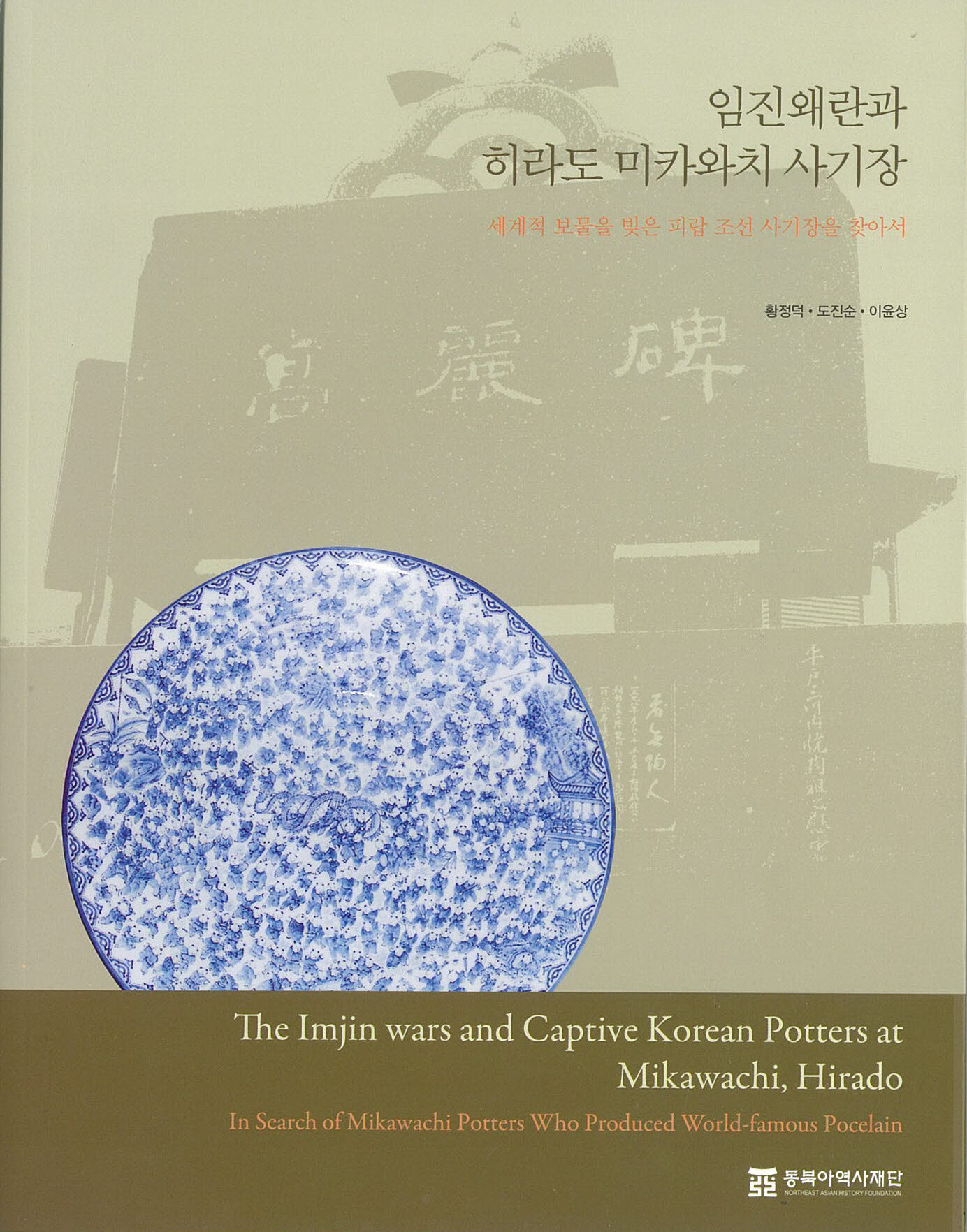Publication
- Date2011.06.20
- Hit1515

1. All rights of the contents and the electronic files in the Webpage are reserved for the Northeast Asia History Foundation.
2. No part of the Webpage may be reproduced, stored in retrieval system, or transmitted, in any form or by any means, without the prior permission.
Title: Imjin Wars and Captive Korean Potters at Mikawachi, Hirado
Small Octavo Edition / 560 pages / 2010 / KRW18,000 (US$15) / ISBN 978-89-6187-209-6
Hwang, Jeong Deok; Doh, Jin Soon; Lee, Yoon Sang
Small Octavo Modification / 163 pages / 2010 / KRW10,000 (US$8) / ISBN 978-89-6187-204-1
The title is an account of field research about the Joseon potters who were kidnapped and taken to Japan during the Imjin Wars, their descendants and the masterpieces they created. The number of Joseon people who were taken to Japan is estimated at 50,000~100,000, and one of the most important group of kidnapped people were Sajijang (沙器匠) or potters who specialize in making ceramics. They made a significant contribution to the development of Japanese pottery and porcelain, but most of their stories were veiled in mystery. The title tells us how they came to settle down in Mikawachi (三川內) after they were taken to Japan and wandered around Hirado (平戶), and the stories of their descendants. It provides readers with a good opportunity to deepen their understanding of Korea-Japan relations and cultural exchanges between the two countries before and after the Imjin Wars.
Table of Contents
Foreword
Preface
1. Jongchagwan(從次貫) and his descendants
1-1. Toyotomi Hideyoshi and Matsuura Shigenobu
1-2. Toyotomi's abduction order
1-3. From Shiinomine to Mikawachi
2. Geogwan(巨關) and his descendants
2-1. Hirado ― first place of settlement
2-2. Nakano ― first kiln(or gama) of Ungcheon(熊川) Sagijang
2-3. From Yoshinomoto to Mikawachi
3. Nakazato Ei(中里嫛) and her descendants
3-1. A young girl without a name ― Ei
3-2. History of Goryeo in Shiinomine (椎の嶺)
3-3. Kishitake (岸岳) ― birthplace of Karatsu pottery and Joseon potters
3-4. Nagahayama (長葉山) kiln in Mikawachi
4. Golden age of Mikawachi
4-1. Joined by Ungcheon Sagijang
4-2. Bakuhu and imperial kiln
4-3. Daegwanso(代官所) and watch office(:御番宅)
4-4. Exports
5. Symbol of Mikawachi
5-1. Karakoe(唐子繪) and Joseon potters
5-2. Kamayama Shrine (窯山神社) where Ei was enshrined
5-3. Ungcheon Shrine(熊川神社) and Dojo Shrine(陶祖神社) of the Geogwan family
6. Hardships and rehabilitation in modern and contemporary history
6-1. Meiji Restoration and transition to Minyo(民窯)
6-2. Today's Mikawachi
6-3. Descendants of Joseon potters
Annex: Translation and Commentary of "History of Hirado Pottery"
